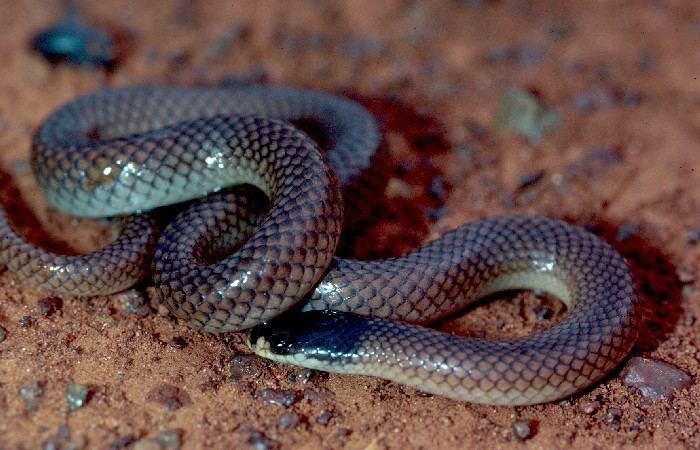Kingdom Animalia Suborder Serpentes Genus Suta Phylum Chordata Rank Species | Subphylum Vertebrata Family Elapidae Scientific name Suta dwyeri Higher classification Suta Order Scaled reptiles | |
 | ||
Similar Suta, Red‑naped snake, Parasuta spectabilis, Suta suta, Suta nigriceps | ||
Suta dwyeri, common names Dwyer's snake, whip snake and variable black-naped snake, is a species of venomous snake found in Australia from New South Wales to South Queensland. While closely related to Australian sea snakes, S. dwyeri is a terrestrial reptile.
Contents
Etymology
The specific name, dwyeri, is in honor of Australian herpetologist John Dwyer.
Taxonomy
There has been a great amount of instability of the nomenclature of many Australian snake taxa, particularly concerning the generic classification of the smaller Elapidae, some of which have been placed in several different genera in the span of just a few decades.
Accordingly, Dwyer's snake, which was originally named Denisonia dwyeri by Worrell in 1956, has been variously called Unechis dwyeri by Cogger in 1983, Suta dwyeri by Valentic in 1998, Suta spectabilis dwyeri by Cogger in 2000, and Parasuta dwyeri by Greer in 2006.
Description
Adult S. dwyeri males average 31 cm (12 inches) in length from the tip of their snouts to their uro-genital vents. Females are slightly smaller at around 29 cm (11 inches) in snout to vent length (SVL). They have cylindrical brown bodies with slender to medium builds. Their heads are short and somewhat widened so as to be distinct from their necks. Their tails are short as well and their dorsal scales are smooth. S. dwyeri has medium-sized eyes with vertically elliptical pupils.
Reproduction
Breeders of exotic reptiles advise letting pairs mate when they reach a length of about 23 centimeters (22 cm in the case of the female). This species is viviparous rather than egg laying and successfully births about three offspring per brood. Newborn S. dwyeri young are about 13 cm long.
Defense mechanisms
Like other snakes in the elapid family, S. dwyeri are venomous and have hollow fangs fixed at the front of the upper jaw. These fangs are connected via ducts to venom glands near the eyes. Like the majority of Australian elapids, Dwyer's snakes are inoffensive and mostly harmless. Herpetologists at the Queensland Museum describe Dwyer's snake as "weakly venomous", and do not include it among their list of eight snake species in the Brisbane area considered capable of inflicting potentially fatal bites. A 25-year-old male in Western Sydney mildly describes a snakebite from this species by saying that he was:
... bitten on the finger by a Suta dwyeri once. The bite did not hurt at all. But little did I know he had left his fang in my finger. A couple of days later it got a tiny bit infected and hurt for a couple of days.. nothing major though.
When threatened S. dwyeri prefers to coil into a tight ball as a defense mechanism for protection from larger predators. This enables the snake to protect its head and more vulnerable areas of its body.
Habit
S. dwyeri is a secretive, nocturnal snake that seeks shelter under rocks, debris, and ground litter, and may make its home in burrows made and abandoned by other creatures. Open woodland and grassland areas are its typical habitat. It feeds mainly on small lizards such as geckos and skinks.
